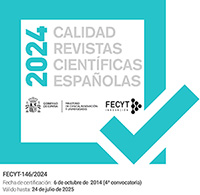¡Pelayo vive! : un arquetipo político en el horizonte ideológico del reino asturleonés
DOI:
https://doi.org/10.5944/etfiii.10.1997.3615Palabras clave:
Pelayo, Reino Asturleonés, Alfonso III, historiografía, siglos VIII-IX,Resumen
Pelayo vive. Los diversos trabajos aparecidos en los últimos años son muestra de la vitalidad del primer rey cristiano de la Edad Media hispana. Tales análisis han tratado de probar la validez de dos teorías historiográficas contrapuestas sobre los orígenes políticos y sociales del reino asturleonés. El presente artículo, en espera de la apertura de un debate al respecto, plantea otra posibilidad explicativa del contenido del ciclo cronístico asturiano del siglo ix, fuentes principales para el estudio de esta figura. En este sentido, aquí se procede al análisis de las mismas retomando estudios parciales, hoy prácticamente olvidados, que demuestran que gran parte de su contenido es básicamente literario. Pero se trata de un tipo de literatura muy especial, formada con retales de hagiografías altomedievales, pasajes bíblicos y leyendas de muy diverso origen. En este sentido, el autor plantea el hecho de que un Pelayo distinto viva tras el contenido aparentemente histórico de las crónicas asturianas. Este personaje legendario y su particular epopeya se inscribiría dentro de una política desarrollada a fines del siglo ix en la corte de Alfonso III conocida bajo el nombre de neogoticismo. Así, el relato legendario de Pelayo constituye un producto neogoticista tendente a crear un mito fundacional, un ascendiente legendario para el monarca y un arquetipo político útil en los procesos de integración social y política en el reino asturleonés.
Pelayo lives. The different papers published in these years show the vitality of the first christian king of the spanish Middie Age. These analysis have tried to prove the validity of two opposite historigraphyc theories about the social and political origins of the asturleones kingdom. This article, while waiting the begining of a debate about this subject, introduces another alternative to explain the content of the asturian chronicle cycle of the IX century, which represente the main sources to study this figure. In this sense, they are anlysed considering partial studies, today practically forgotten, which show that a great part of their content was basically literature of a very special kind, formed with pieces of high middie age hagiographies, bible chapters and legends of very different origins. In this sense, the author introduces the fact that a different Pelayo lives behind the apparently historie content of the asturian chronicles. This legendary figure and his personal epopeya could be included in a context of the policy developed at the end of the nine century, under the kingdom of Alfonso III, known by the name of neogothicism. Henee, the legendary tale of Pelayo represents a neogothicist product towards the creation of a constituent myth, a legendary ancestor for the king and a usefull politycal archetype for the social and politycal processes of integration in the asturleonés kingdom.
Descargas
Descargas
Publicado
Cómo citar
Número
Sección
Licencia
Los autores que publican en esta revista están de acuerdo con los siguientes términos:
- Los autores conservan los derechos de autor (copyright) de las obras publicadas y garantizan a la revista el derecho de ser la primera publicación del trabajo al igual que permiten la reutilización del mismo bajo la licencia de uso indicada en el punto 2.
- Las obras se publican en la edición electrónica de la revista bajo una licencia Creative Commons Reconocimiento-NoComercial 4.0 Internacional, que permite a otros compartir el trabajo con un reconocimiento de la autoría del trabajo y de la publicación inicial en esta revista. Se pueden copiar, usar, difundir, transmitir y exponer públicamente, siempre que: i) se cite la autoría y la fuente original de su publicación (revista, editorial y URL de la obra); ii) no se usen para fines comerciales.
- Se permite y se anima a los autores a difundir electrónicamente las versiones pre-print (versión antes de ser evaluada) y/o post-print (versión evaluada y aceptada para su publicación) de sus obras antes de su publicación, ya que favorece su circulación y difusión más temprana y con ello un posible aumento en su citación y alcance entre la comunidad académica (por ejemplo, en repositorios institucionales o en su propio sitio web). Color RoMEO: verde. (Véase The Effect of Open Access) (en inglés).
Authors who publish in this journal agree to the following terms:
- Authors retain copyright and grant the journal right of the first publication with the work simultaneously licensed under a Attribution-NonCommercial-NoDerivatives 4.0 International, that allows others to share the work with an acknowledgement of the work's authorship and initial publication in this journal.
- Authors are able to enter into separate, additional contractual arrangements for the non-exclusive distribution of the journal's published version of the work (e.g., post it to an institutional repository or publish it in a book), with an acknowledgement of its initial publication in this journal.
- Authors are permitted and encouraged to post their work online (e.g., in institutional repositories or on their website) prior to and during the submission process, as it can lead to productive exchanges, as well as to earlier and greater citation of the published work (See The Effect of Open Access).








